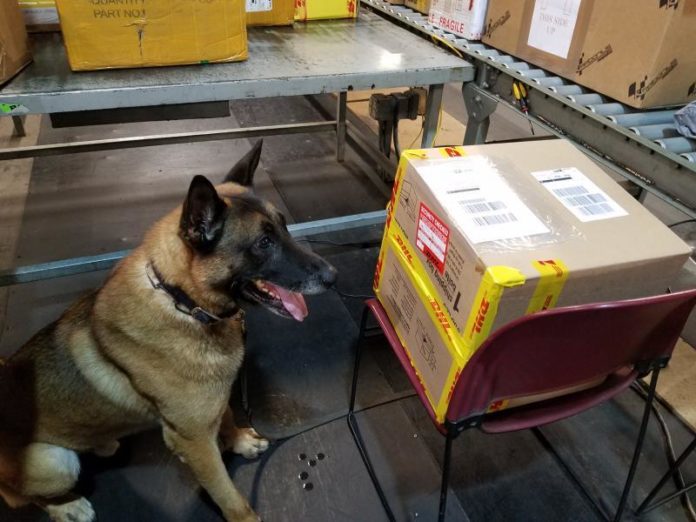
CINCINNATI — U.S. Customs and Border Protection (CBP) officers in Cincinnati began the new year with multiple interceptions of cocaine and methamphetamines at a local express consignment facility.
On January 4, CBP Officers conducting routine inspections found two unmanifested shipments coming from Mexico and destined to Gridley, California. The packages contained what appeared to be tinfoil-wrapped candy, but officers noticed anomalies during both the x-ray and physical inspections. Officers unwrapped the candy and found that several pieces of the candy held plastic capsules containing small bags of a white crystalline powder that tested positive for methamphetamines. Both shipments contained a total of approximately nine pounds of methamphetamines.
On January 24, CBP Narcotic Detector Dog, Freddy, alerted to a shipment manifested as “decorative tombstone” while working incoming cargo from Canada. After noting inconsistencies during an x-ray exam, officers opened the shipment and discovered a tombstone made of a resin material. Upon further inspection, the backing of the tombstone was easily removed exposing a hollow interior packed with a white powder. Officers tested the powder, which was positive for cocaine.

contained cocaine / CBP
“Our officers are committed to keep our country and communities safe from illegal and dangerous drugs,” said CBP Cincinnati Port Director Joshua Shorr. “This seizure is one example of the quality enforcement work they do on a daily basis.”
Officers recently found other shipments of cocaine smuggled in documents, piston heads, and wheels.
Cocaine and methamphetamines are dangerous and highly addictive stimulants. Abuse of these drugs can lead to paranoia, exhaustion, heart conditions, convulsions, stroke, and death. Both are classified as Schedule II stimulants under the Controlled Substances Act.

